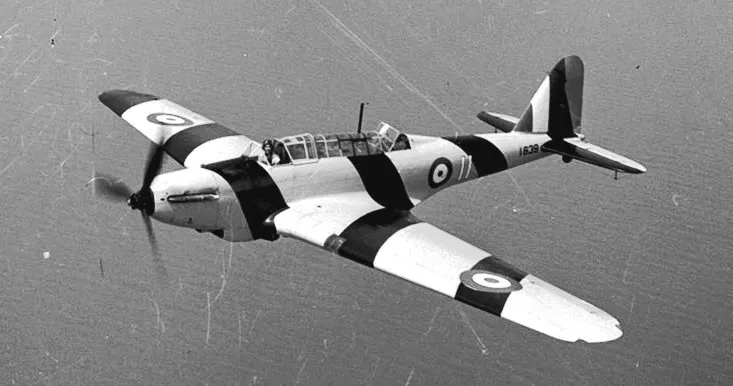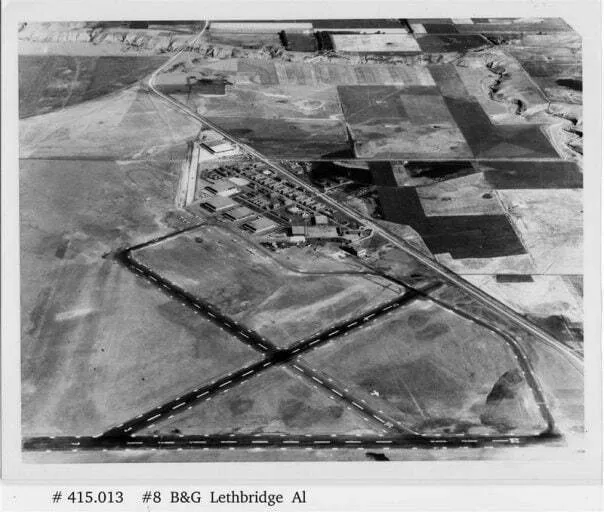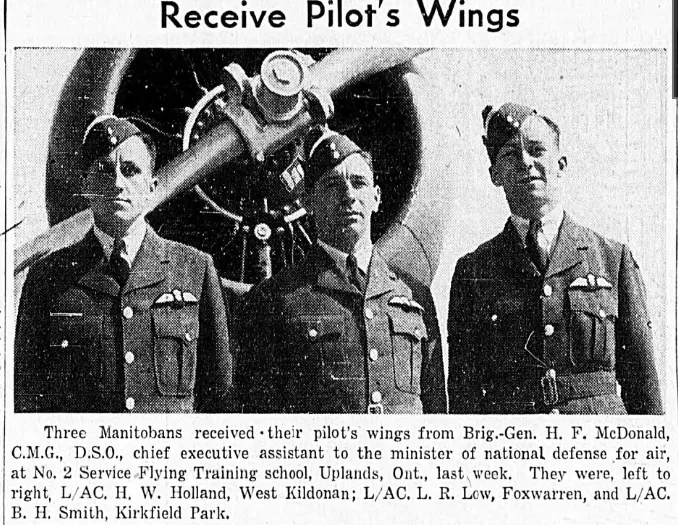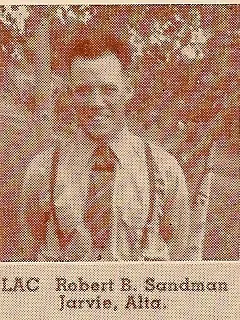Morin, Gerald Gerard Joseph
Killed in Flying Accident 1942-08-19


Birth Date: 1922
Born:
Son of Emile and Christiana Morin, of St. Boniface.
Home: St Boniface, Manitoba
Enlistment:
Enlistment Date: Unknown
Service
RCAF
Unit
8 BGS- Bombing & Gunnery School
Base
Lethbridge, Alberta, Canada
Rank
Leading Aircraftman
Position
Leading Aircraftman
Service Numbers
R/119793
First Burial
 St Boniface Cemetery, St Boniface, Manitoba
St Boniface Cemetery, St Boniface, Manitoba
This incident involved multiple aircraft:
- Battle Mk. I Serial: R4000
All the above aircraft in the above list are referenced in this report.
Battle R4000
Fairey Battle

Fairey Battle, RCAF (Serial No. 1639), wearing target towing stripes, used in bombing and gunnery training, July 1941.
The Fairey Battle is a British designed single engine light bomber, used as a trainer in the RCAF. The Battle was powered by the same high-performance Rolls-Royce Merlin piston engine that powered various contemporary British fighters including the Spitfire. It was, however significantly heavier, with its three-man crew and bomb load. Although it was a great improvement over the aircraft that preceded it, the Battle was relatively slow and limited in range. It was only armed with two .303 in machine guns facing the rear, and was found to be highly vulnerable to enemy fighters and anti-aircraft fire.
The Fairey Battle participated in direct combat missions during early stages of the Second World War and earned the distinction of attaining the first aerial victory of an RAF aircraft in the war. In May 1940 the Battle suffered heavy losses, frequently in excess of 50 percent of aircraft sortied per mission. By the end of 1940 the type had been entirely withdrawn from active combat service, and was relegated to training units overseas, with many serving in Canada.
The RCAF received its first batch of eight Battles in August 1939, at RCAF Station Borden, Ontario. A total of 802 Battles were eventually delivered from England, serving in various roles and configurations, including dual-control trainers, target-tugs, and gunnery trainers for the Bombing and Gunnery schools of the Commonwealth Air Training Plan. Canadian use of the Battle declined as more advanced aircraft, such as the Bristol Bolingbroke and the North American Harvard were introduced. Battles remained in RCAF service until shortly after the end of the war hostilities in 1945. No. 111, 115 and No. 122 Squadrons of the RCAF flew Battles.
Fairey Battles were not manufactured in Canada, but they were assembled, serviced and modified here, including the installation of turrets at the Canadian Car and Foundry plant in Montreal.Harold Skaarup web page with revisions
 Wikipedia Fairey Battle Bomber
Wikipedia Fairey Battle Bomber
 Fairey Battle - Kestrel Publications
Fairey Battle - Kestrel Publications
8 BGS (8 Bomb and Gunnery School)
The Bombing and Gunnery School (B&GS) offered instruction in the techniques of bomb aiming and aerial machine gunnery to Air Observers, Bomb Aimers, and Wireless Air Gunners. These schools required large areas to accommodate their bombing and gunnery ranges, and were often located near water. The Avro Anson, Fairey Battle, Bristol Bolingbroke, and Westland Lysander were the standard aircraft used at B&GS schools.
Established in 1940 at the present site of Lethbridge Airport CYQL.
More information on the RCAF Station at Lethbridge AB can be found at

 Bomber Command Museum Of Canada
Bomber Command Museum Of Canada
 Vintage Wings - Ghosts Of Alberta
Vintage Wings - Ghosts Of Alberta
Battle R4000
Battle Mk. I R4000
TOS 29 Jan 1941 at No. 31 Service Flying Training School, Kingston, Ont. Category C damage 5 May 1941, when pilot experienced a brake failure, and hit hangar. Category C5 damage at 14:00 on 26 May 1941, at Kingston, engine failure after take-off, forced landing, Category B damage. To workshop reserve at No. 6 Repair Depot, Trenton on 9 August 1941. Transferred from RAF account to JATP account on 21 October 1941, still at No. 6 Repair Depot. To No. 4 Training Command, for use at No. 8 Bombing & Gunnery School at Lethbridge, Alberta. Category A crash on 21 August 1942, while with this School, near Magrath, 10m SW of Lethbridge. Aircraft entered a spin, pilot unable to regain control, struck ground at high rate of decent. Sergeant L.R. Low, Leading Aircraftman G.G. Morin, and Leading Aircraftman R.B. Sandman were killed. To No. 10 Repair Depot, Calgary for scrapping.1940-09-30 Taken on Strength No. 1 Training Command 2019-08-20
1941-May-06 Accident: 31 Service Flying Training School Loc: Main Aerodrome Kingston Names: Aggleton
1941-May-26 Accident: 31 Service Flying Training School Loc: Aerodrome Kingston Names: Archer
1942-August-19 Accident: 8 Bomb & Gunnery School Loc: Magrath Alberta Names: Low | Morin | Sandman
1943-03-02 Struck off Strength Struck off, reduced to spares and produce 2019-08-20
 Canadian Virtual War Memorial
Canadian Virtual War Memorial Commonwealth War Graves Commission
Commonwealth War Graves Commission

 Harold A Skaarup Web Page
Harold A Skaarup Web Page YouTube - Valour Canada Aerodrome of Democracy
YouTube - Valour Canada Aerodrome of Democracy